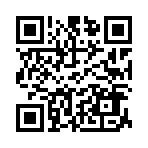I had started academic research before the Millennium examining the challenges to District Councils in England, this had confirmed my suspicions that a lack of integration, citizen-focus and partnership working were drawbacks, perhaps as a result of the centrally-imposed targets and laterly the Priority Service Outcomes that were to be detailed following 2001.
Even more contradictory was the lack of consideration for the Community Planning aspect of the Modernising Government agenda. I had discussed a joint piece of work with a regional university around examining citizens’ views of service delivery arrangements in parallel with views on meeting the electronic targets being attempted, but unfortunately pressures to meet the targets didn’t leave enough time to carry out the research further.
Following the target deadline I breathed a sigh of relief and was left attempting to embed the learning of the last few years with providing services in the manner wanted by the citizen. At this point I attempted again to consider the research and contacted a university that had a history of work in local government, digital inclusion and electronic voting, De Montfort, with a research proposal, which was accepted! Unfortunately or fortunately I was then seriously ill but the period of rest and recuperation gave me time to focus on reading and the the reading distracted me from the gravity of my situation.
The reading indicated that very little academic work had still been done on e-government and that studies by the likes of Gartner Research had revealed some quite complex systems for measuring electronic service delivery that were probably only fit for national governments. What was also revealed was a long running debate as to whether government was dealing with customers or citizens, with most of the votes in favour of calling the people a government deals with citizens, this included the Government of Canada supporting the move. Another long running piece of work review ended up around assessing customer satisfaction, which along with measuring the gap between expectation and delivery, has seen a great number of papers published but no great conclusions made.
The recent favourite approach in business is to employ customer engagement measurement rather than customer relationship management and this I conclude is a viable approach, which is that by pushing for and collating feedback from all customers, which, in the context of government, I prefer to call citizens, across all channels, we can try to improve issues in end-to-end services by correcting them using the feedback.
We still have a long way to go in channel management and I think citizen engagement management is a move in the right direction, it will also assist in both avoiding digital exclusion issues along with creating quality services, It was also the approach I took when I created the blog http://greatemancipator.com, in order to discuss these issues and promote them amongst practitioners. Academic research tends to be focused on learn-ed conferences, very wordy and expensive journals, so my approach of sticking the outcomes under the nose of anyone interested and asking for their participation seemed a sensible approach.
In the New Year I intend to have another survey along with starting a series of interviews with particularly appropriate individuals. Any volunteers or suggestions?
Season’s greetings and a prosperous new year to everyone!



 Posted by greatemancipator
Posted by greatemancipator 
